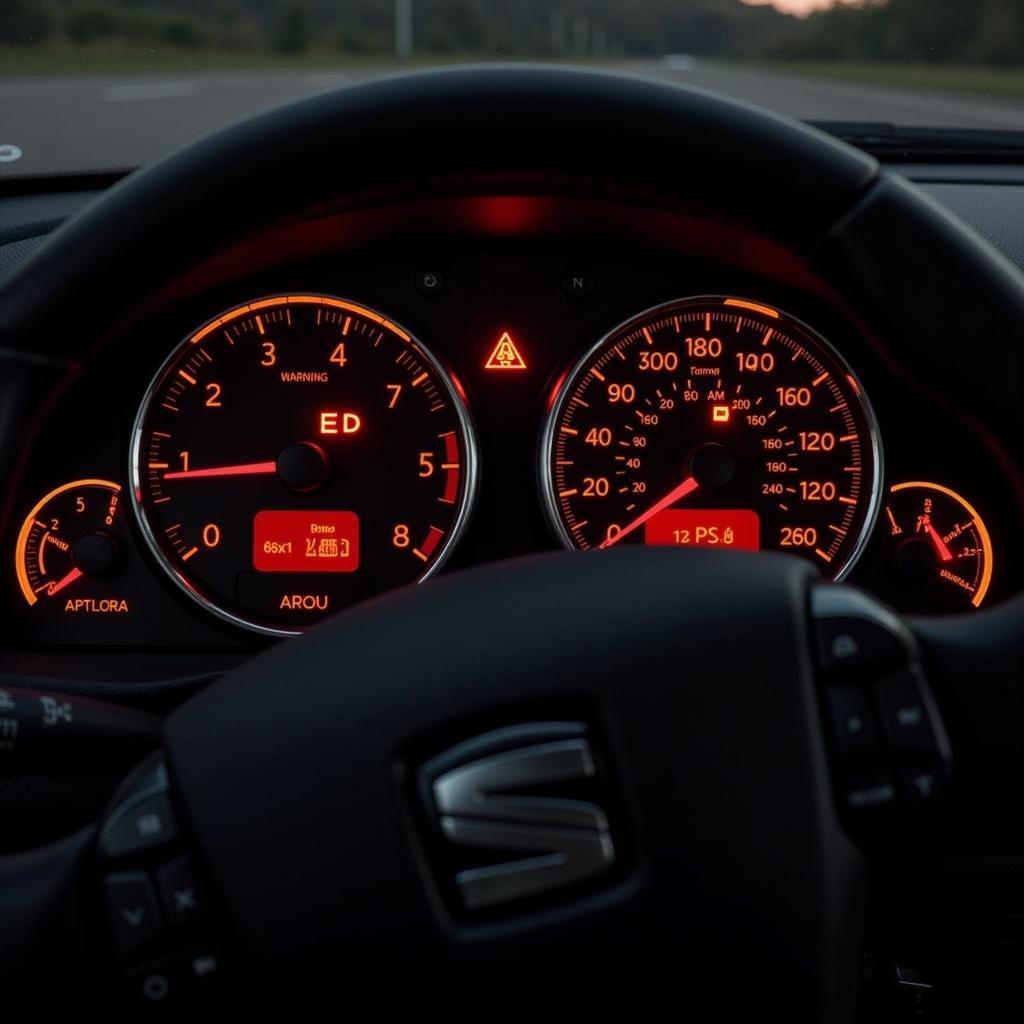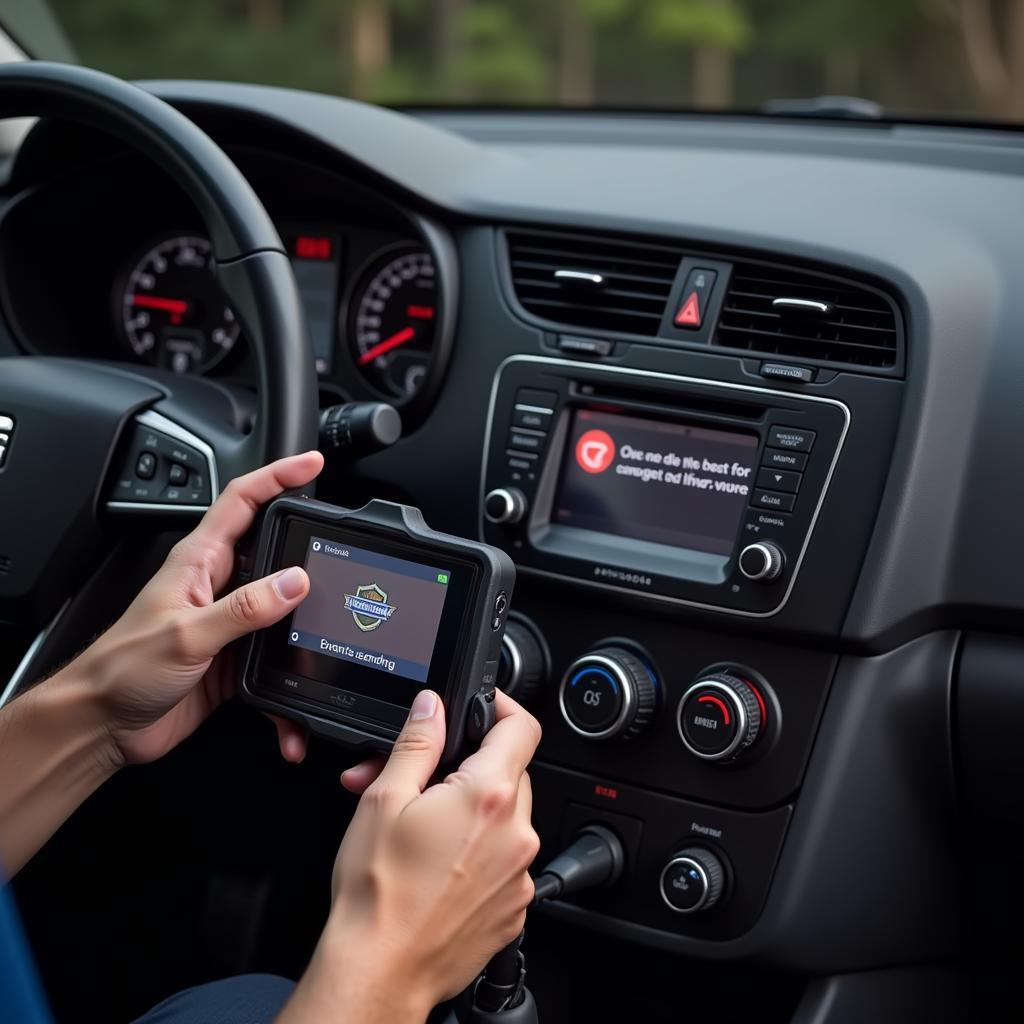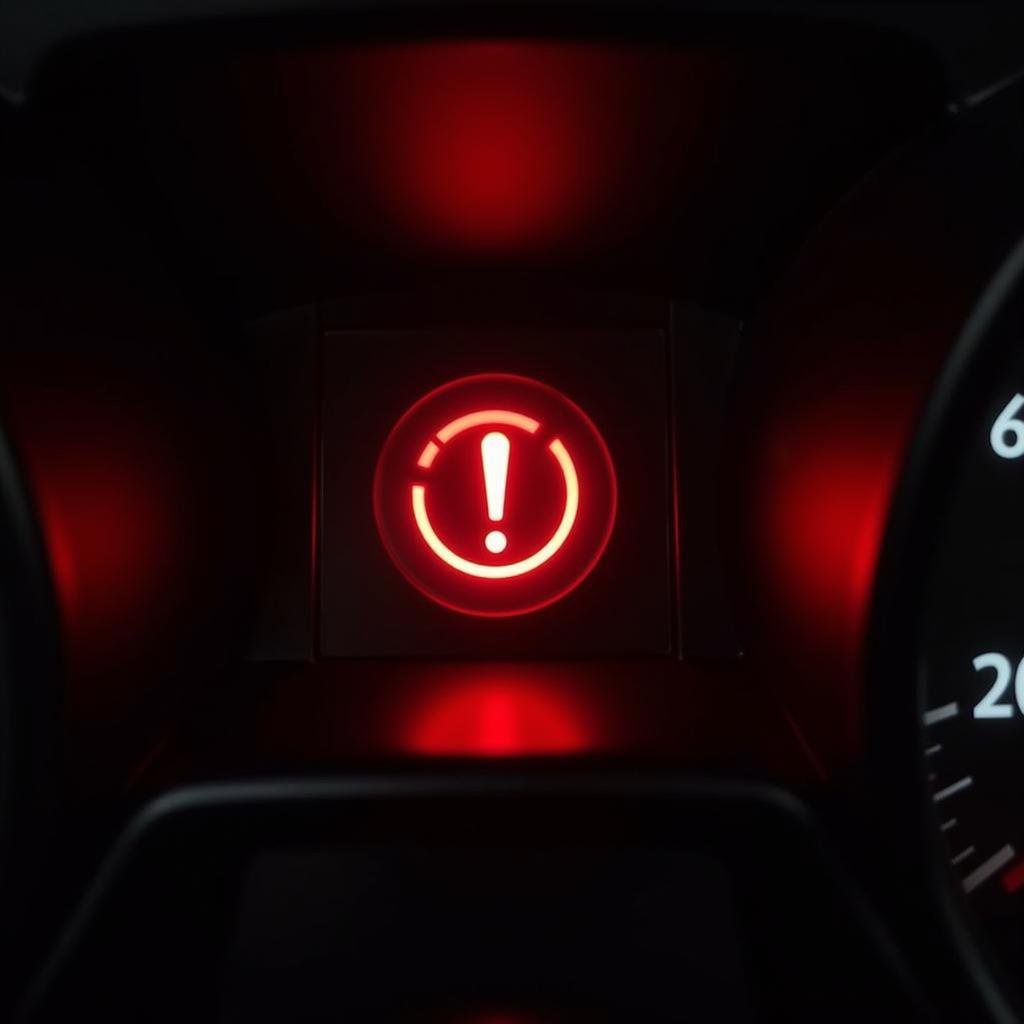The dreaded illumination of a warning light on your Seat Arosa’s dashboard can be a source of anxiety. Understanding what these seat arosa warning lights signify is crucial for addressing potential issues promptly and ensuring safe driving. This guide delves into the common warning lights found in a Seat Arosa, their meanings, and troubleshooting steps.
A illuminated warning light on your Seat Arosa dashboard serves as your car’s communication system, alerting you to potential problems. Ignoring these signals can lead to further damage and costly repairs. Learning to interpret these symbols is essential for responsible car ownership. Let’s explore some of the most frequently encountered warning lights and what they mean for your Seat Arosa.
Deciphering Your Seat Arosa Dashboard Symbols
The variety of warning lights in a Seat Arosa can be confusing. They range from simple indicators to critical warnings. Knowing the difference between a low fuel indicator and an engine management light is paramount.
- Engine Management Light (EPC): The EPC warning light, often appearing as a stylized engine symbol, can indicate a wide range of issues. From a faulty sensor to a more serious engine problem, it requires immediate attention. Don’t delay a diagnosis. See our detailed guide on seat arosa epc warning light.
- Brake Warning Light: This typically illuminates as a red exclamation mark within a circle. It might signify low brake fluid, worn brake pads, or a problem with the ABS system. Address this immediately as it’s crucial for your safety.
- Battery Warning Light: A battery symbol indicates a problem with the charging system. This could be a failing alternator, loose battery connections, or a worn-out battery. Continued driving with this light on can lead to a complete electrical system failure.
- Coolant Temperature Warning Light: Often depicted as a thermometer in water, this light warns of overheating. Check your coolant level and ensure there are no leaks. Overheating can cause severe engine damage.
- Oil Pressure Warning Light: This light, resembling an oil can, indicates low oil pressure. Continuing to drive with low oil pressure can damage your engine significantly. Stop immediately and check your oil level.
 Seat Arosa Dashboard Warning Lights
Seat Arosa Dashboard Warning Lights
“Regularly checking your car’s fluids, such as oil and coolant, can prevent many warning light situations,” advises Alex Thompson, a seasoned automotive diagnostician.
Troubleshooting Seat Arosa Warning Lights
When a warning light appears, it’s natural to feel concerned. Here’s a step-by-step guide to help you troubleshoot:
- Consult the Owner’s Manual: Your Seat Arosa owner’s manual provides detailed explanations of each warning light. Identify the specific symbol and its meaning.
- Assess the Severity: Is the light flashing or constantly illuminated? Flashing lights usually indicate a more urgent problem.
- Check Basic Things: Check fluid levels (oil, coolant, brake fluid), tire pressure, and any visible damage.
- Use a Diagnostic Scanner (OBD-II): These affordable devices can plug into your car’s OBD-II port and provide specific error codes, allowing for more precise diagnosis.
- Seek Professional Help: If you can’t identify the problem, contact a qualified mechanic specializing in Seat vehicles. epc warning light seat.
“Don’t underestimate the power of a good diagnostic tool,” adds Maria Sanchez, a software engineer specializing in automotive diagnostics. “They can save you time and money by pinpointing the exact issue.”
 OBD2 Scanner Connected to Seat Arosa
OBD2 Scanner Connected to Seat Arosa
Why Remote Diagnostics and Software Solutions are a Game Changer
Remote diagnostics and software solutions can revolutionize how we address seat arosa warning lights. These technologies allow skilled technicians to access your vehicle’s data remotely, diagnose the problem, and even upload software fixes without a physical visit to the workshop. This approach offers:
- Convenience: No need to tow your car or disrupt your schedule.
- Speed: Quicker diagnostics and faster repairs.
- Cost-effectiveness: Potentially lower labor costs and reduced downtime.
- Expert Access: Access to specialized technicians regardless of your location.
You can learn more about specific EPC light issues related to the Seat Arosa by visiting this resource: epc warning light seat arosa.
Conclusion
Understanding your Seat Arosa warning lights is essential for maintaining your car and ensuring safe driving. This comprehensive guide empowers you with the knowledge to interpret those dashboard symbols, troubleshoot potential problems, and utilize advanced remote diagnostic solutions. By taking proactive steps and staying informed, you can keep your Seat Arosa running smoothly for years to come. Don’t ignore those warning lights – they are your car’s way of asking for help.
FAQ
- What should I do if the EPC light is on? Don’t ignore it. Consult your owner’s manual, use an OBD-II scanner, or contact a qualified mechanic.
- Can I drive with a warning light on? It depends on the light. Some indicate minor issues, while others warn of critical problems requiring immediate attention.
- How can I reset a warning light? Often, addressing the underlying issue will extinguish the light. However, sometimes a diagnostic tool is needed to reset it.
- What are the most common warning lights in a Seat Arosa? Common ones include the EPC light, brake warning light, battery light, coolant temperature light, and oil pressure light.
- Are remote diagnostics effective? Yes, they can provide quick and convenient solutions to many warning light issues.
- Where can I find more information about my Seat Arosa warning lights? Your owner’s manual is the best resource, and online forums and specialized websites can also provide valuable information.
- How often should I check my car’s fluids? Check your oil and coolant levels at least once a month, and your brake fluid every few months.

